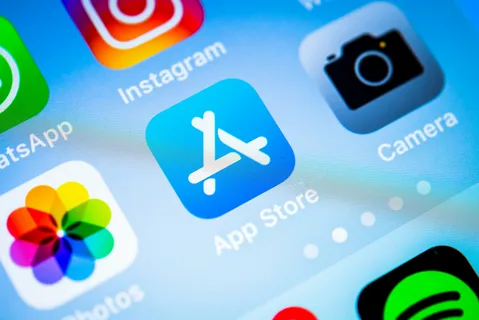Building a mobile app is easy if you understand the process. You can do it yourself, you can hire a team, or you can find another, unique way. Today we will tell you what resources will be needed to create a mobile application and what you need to know before starting development, is it necessary to be a programmer and how much does a successful release cost.
Mobile app: why you need it
The mobile application serves different purposes. It can be the main product of the business or an additional channel for attracting customers. For example, the Telegram messenger is an independent service application that covers the need for users to communicate.However, with any strategy, a mobile application brings benefits: it helps to grow a business and increase sales.
The old method of selling through the site is no longer working one hundred percent. First, 56% of the world’s Internet traffic is taken by mobile phone users. Secondly, many people prefer apps to classic sites in the browser. That is, part of the target audience will not go to the site for shopping, because they do not use a browser. It turns out that if a business has a mobile application, it can reach more potential customers.
For some startups, creating mobile apps is inevitable because the idea can only be implemented on a smartphone. For example, a GPS navigator. Such businesses can test their hypotheses and test demand only with the MVP of the application, which we will talk about later.
How to make a mobile application
There are two main ways to create mobile applications – custom development and using designers. Both options have their pros and cons and are worth exploring.
It is important to note that it is not rational for a startup to immediately create a full-fledged application, since the idea has not yet been tested. There is a risk of spending time and money where there is no demand. Therefore, first they prepare the MVP of the application – the minimum viable product. It covers the needs of users and generates income for the creator, but MVP includes only basic functions. MVP is designed to quickly and inexpensively test the startup idea and demand. If everything went well, then the MVP is improved and additional features are added. You can read more about MVP here.
Assembly on the constructor
These are services for creating mobile applications without development. The constructor is a library of templates, from where you can select ready-made blocks and partially modify them. For example, there is a “Menu” element, you add it to your application by changing the names of the items themselves and the font color. The algorithm is clear, the result is immediately visible, and there is no interaction with the code. Such constructors are called “no code”.
But there is also a version with an asterisk, low code, where you can add code to the finished blocks. This option is suitable when you need to do something non-standard. In the menu code example, you can specify an unusual arrangement of items or add a unique design.
Comparison of low-code and no-code development
The main advantage of designers is speed. You can make an application in 3-4 hours if it has simple functionality. Another plus is ease of use: the constructor has ready-made blocks, it remains to select them and change the available parameters.
The cost of no code development is a double-edged sword. On the one hand, cheap, and on the other, not at all. Building a mobile app with a builder is the tip of the iceberg. Soon, additional elements will need to be added there, which means that a developer will be involved and paid. Therefore, the apparent cheapness at the beginning of the journey is deceptive. It’s like with repairs in a new building: you can immediately make a high-quality and expensive one, so that it lasts for 10 years, or you can do it cheaply and in a hurry, and redo it after 2 years. And not the fact that in the second case it will be possible to save.
Custom development
This type of development will allow you to create an application unique and unlike others. You can come up with any elements, combinations and design, and the team will turn them into reality. An ideal option to launch a mobile application with a complex structure or having no analogues.
Comparison of applications created in the constructor and developed custom
Custom development is like a VIP tariff: a special approach to the application and full compliance with customer requirements. You can implement all ideas without caring whether there are templates for them or not. Custom features and corporate design are all hallmarks of custom development. It is addressed by all those who plan to develop and improve their application. Unlike a constructor, custom development allows you to scale and turn an MVP into a full-fledged product.
The disadvantages of individual development include duration. Creating a mobile application from scratch is not a matter of one day or one week. On average, they lay down 4 months for an MVP, and even this period is approximate. The duration is related to the complexity of the process: the application is worked out to the smallest detail at each stage, the requirements for the project may change in the course of implementation, and testing should not be forgotten.
But custom development of mobile applications is the case when the end result justifies all the resources spent.
